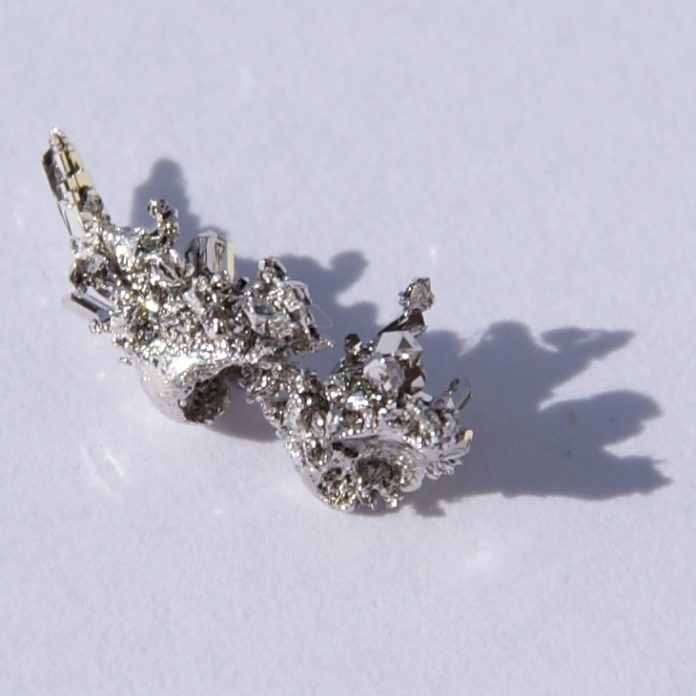
Palladium, a rare and precious metal, has had a fascinating price history over the years. Its journey from relative obscurity to becoming a highly sought-after commodity is a tale of increasing industrial demand, supply constraints, and geopolitical factors. Cover photo from Wikipedia.
The story of palladium’s rise to prominence began in the 1990s when automakers discovered its potential as a cost-effective alternative to platinum in catalytic converters. As environmental regulations tightened, the demand for palladium in the automotive industry soared, leading to a significant price increase. By early 2000, palladium prices had surged to over $1,000 per ounce, marking a historic high.
However, the euphoria was short-lived. The dot-com bubble burst, and the global economy slowed down, causing palladium prices to plummet. For most of the following decade, palladium traded below $400 per ounce, as demand remained subdued and supply was sufficient to meet the market’s needs.
The turning point came in 2008 when the global financial crisis triggered a renewed interest in precious metals as a safe haven. Palladium, along with other precious metals, benefited from this shift in investor sentiment. As the automotive industry recovered and global vehicle production increased, the demand for palladium began to outstrip supply, setting the stage for a remarkable price rally.
From 2016 to 2019, palladium prices embarked on an extraordinary upward trajectory, more than tripling in value. The metal’s price performance outshone that of other precious metals and the broader stock market. In 2017, palladium achieved a significant milestone, surpassing the price of platinum for the first time in history. This remarkable feat was driven by a combination of robust investor demand and a resurgence in the automotive manufacturing sector worldwide.
The palladium market’s fundamentals remain compelling, with chronic supply deficits expected to persist in the coming years. Russia and South Africa, which together account for over 80% of global palladium production, face ongoing challenges. Labor unrest, power outages, and geopolitical tensions have the potential to disrupt supply, further exacerbating the market imbalance.
On the demand side, stricter emission standards worldwide, particularly in key markets like China and India, are expected to drive increased palladium consumption in catalytic converters. As the world shifts towards cleaner transportation, the role of palladium in reducing harmful vehicle emissions becomes increasingly critical.
Beyond the automotive sector, palladium finds applications in various other industries, including electronics, dentistry, and jewelry. As technology advances and new uses for palladium emerge, the demand for this versatile metal is likely to remain strong.
Looking ahead, the palladium market is poised for an exciting future. While short-term price fluctuations are inevitable, the long-term fundamentals of supply and demand suggest that palladium could continue to outperform other precious metals. For a detailed look at palladium’s historical price performance, visit https://metalpriceapi.com/palladium-price-history. As investors seek to diversify their portfolios and capitalize on the unique opportunities presented by this rare metal, palladium is likely to remain in the spotlight.
In conclusion, the palladium price history is a testament to the metal’s growing importance in an increasingly environmentally conscious world. As supply constraints persist and demand from various industries continues to grow, palladium’s journey is far from over. The future of this precious metal looks bright, and its price performance in the coming years will undoubtedly be a story worth following.











